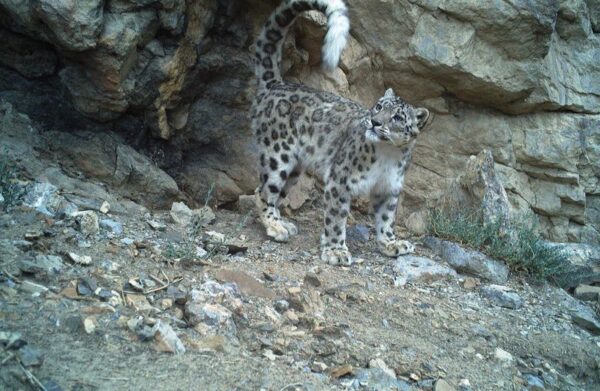News
Snow Leopard Population Rises in Himachal; Strong Presence Recorded in Spiti, Pin Valley and Upper Kinnaur

Researchers have captured 262 photographs of adult snow leopards, leading to an estimated 83 adult individuals across the state.
According to the latest joint survey by the Nature Conservation Foundation and the Wildlife Wing of the State Forest Department, the population of the highly endangered snow leopard in Himachal Pradesh has nearly doubled—rising from 44 in 2021 to 83 in 2024.
The second state-wide Snow Leopard Population Assessment confirmed a strong presence of the species in high-altitude terrains, particularly in Spiti, Pin Valley, Upper Kinnaur, and Tabo, where the highest density was recorded.
The survey found snow leopard densities ranging from 0.16 to 0.53 individuals per 100 square kilometers. Using extensive camera-trapping across six representative sites covering nearly 26,000 square kilometers, researchers recorded 262 images of adult leopards. Based on this data—excluding cubs—the estimated number of adult snow leopards in the state stands at 83.
Dr. Koustubh Sharma, Executive Director of the Global Snow Leopard Ecosystem Protection Program (GSLEP), said the Trans-Himalayan region is home to some of the world’s most fragile ecosystems, now increasingly vulnerable to climate change. “Monitoring flagship species like the snow leopard helps us assess ecosystem health and resilience,” he noted. “With support from the Forest Department, local communities, Royal Enfield Social Mission, and the Snow Leopard Trust, we have been able to monitor these landscapes using advanced camera traps.”
The study follows India’s Snow Leopard Population Assessment Protocol, developed by the Ministry of Environment, Forest and Climate Change, and adheres to global GSLEP standards.
Chief Conservator of Forests (Wildlife) Preeti Bhandari said the latest survey was completed within a year, compared to three years for the previous one.
Deputy Conservator of Forests Goldy Chhabra added that forest staff, local residents, and researchers worked in extremely challenging terrains to complete the assessment, confirming that Himachal’s snow leopard population remains healthy and stable.
